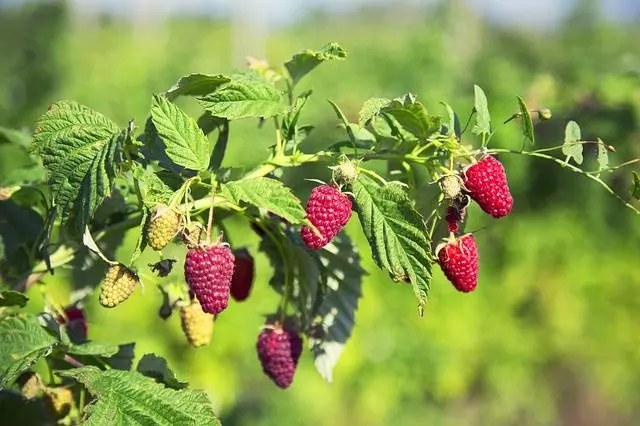The raspberry is obtained from a perennial shrub native to Europe and northern Asia known as raspberry and whose scientific name is Rubus idaeus. The raspberry is a plant that grows mostly in countries with temperate climates. However, with proper care, they can be planted in slightly tropical or hot climates. Learn how to plant raspberries, how to care for them, and how to harvest their fruits. Learn all about how to grow raspberries in this guide.
Raspberry cultivation can be done from seed, but faster results are obtained by sowing from its layering or tillers, which are obtained from an already developed plant. You can also buy a plant ready to be planted in our garden at your local nursery.
The fruit of this plant has different colors, as they can be red, black, and yellow depending on the variety chosen. This shrub can reach a height of 1.5 to 2.5 meters. It also has a subway stem that emits branches every year, which after their first load die to give way to new shoots that will come out of the subway stem.
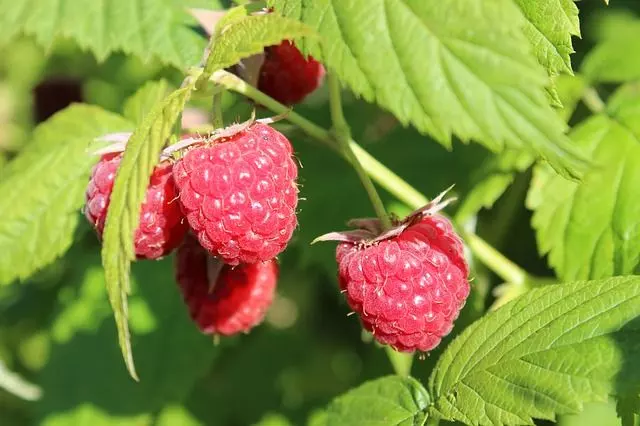
Table of Contents
Preliminary Tips on How to Grow Raspberries
Raspberry Varieties
The first thing to keep in mind about how to plant raspberries is that you should choose the most appropriate variety for the climate where you live. This is because there are varieties that grow best in colder climates such as Nova, Nordic, and Beyne. And for southern climates where the plant will be more exposed to heat, the Southland, Dorman Red, and Bababerry species are recommended. Size and growth also depend on the variety.
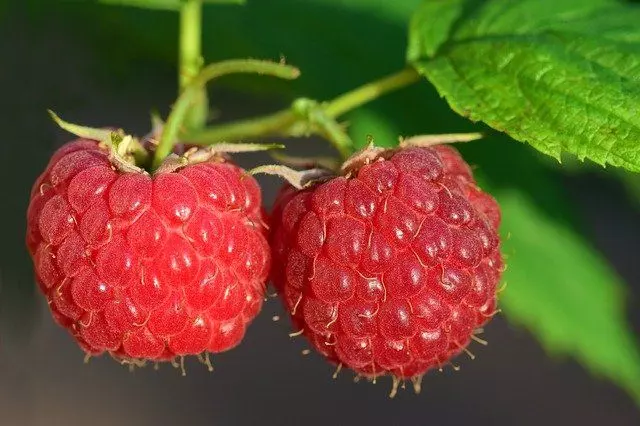
When to Plant and Suitable Climate?
Something to keep in mind about how to plant raspberries is that this shrub should be planted in a fairly sunny place, as this plant requires between 8 to 10 hours of direct sun. This is of special interest if you want to obtain fruits since this favors the good development of the fruits both in size, flavor, and juiciness.
Raspberries are resistant to different environmental temperatures as long as they are not too low or too hot. Another point about how to plant raspberries is that the crop should be protected from strong winds. The most appropriate time to plant this plant is mid-winter. However, this is not a requirement in places with temperate climates, since they are characterized by being cool and with a constant temperature.
Substrate or Soil
The soil to be used should be loose to avoid waterlogging. It should be soil rich in organic matter and with a great capacity to retain water. This does not mean that clay soils should be used since it can rot the roots after a few years. Nor is it advisable to use very loose soil or soil with a lot of gravel or sand, as these easily lose their fertility. Preferably you should use a sandy loam substrate with earthworm humus and a neutral to slightly acidic pH of 5.6 to 6.2.
A point to keep in mind about how to plant raspberries is that you should not use soils that have been used in the last 5 years to plant solanaceous plants such as potatoes, tomatoes, peppers, eggplants. This is because they may contain spores of fungi that cause verticillium. Do not use soils that have been used to grow strawberries, raspberries, or blackberries because they may contain nematodes.
Finally, it is recommended to avoid soils with perennial weeds such as grass or Aleppo sorghum. If weeds are present you should apply some organic herbicides. This is because when it comes to planting raspberries, the success of our crops depends a lot on the soil.
How to Grow Raspberries Step by Step
You should plant this bush at a distance of 60 cm if they are red or yellow varieties. If they are black raspberries you should leave a space of 90 cm between each plant.
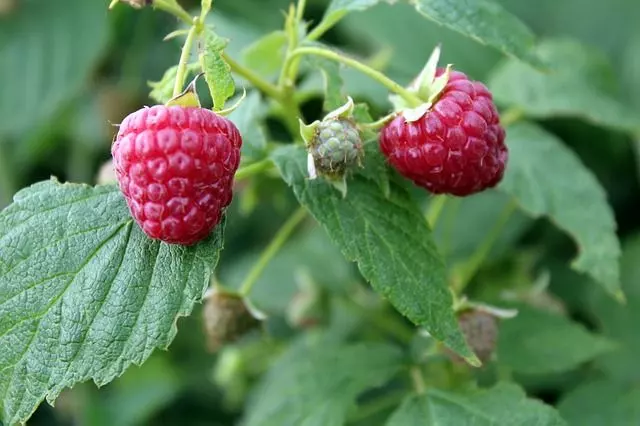
Propagation
Although it can be sown from seed, it is generally propagated by offshoots or by layering in a mound. This is because propagation by seed can present many difficulties, including high cost and lack of parent characteristics.
Seedlings
You can use the tillers of this plant from the second year and should choose the offshoots of the most vigorous plants and that are better rooted. The offshoot should be separated from the branch from the very base.
These seedlings can be left for a year in a pot and then repotted in the spring to the final location. Keep in mind that in these cases fruiting should not take place until the fourth year.
Mound Layering
To do this you must cut the mother plant very close to ground level, during the winter. Then you should cover this bush with soil, peat, or mulch and you can even mix them. Now you must let the plant grow for a year until new shoots come out to cut them from the ground level.
Let new shoots grow again until they reach a height of 18 cm to cover them with a substrate, forming a mound for the branches to take root. Repeat this process when new shoots grow to a height of 25 cm. Finally, it is repeated when the shoots reach 40 centimeters. This type of propagation can take up to 3 years to complete.
Sowing by Seed
Raspberry seed should be germinated in a pot with organic soil and peat in mid-winter at a depth of 2.5 cm. The raspberry should be repotted into the ground in early spring when the plant reaches 2.5 cm in height and has several leaves.
How to Grow Raspberries in a Pot
Raspberries can be planted in pots but they must have a diameter of at least 30 cm. These should have holes in the lower part so that the irrigation water drains and avoids stagnation. The soil should be well manured and fertilized and the pot should be placed in a place where it can receive sunlight.
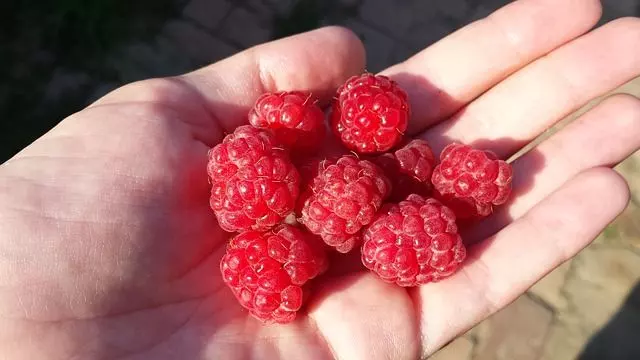
How to Take Care of Raspberry
Raspberry planting depletes the soil so it is appropriate to pull up the plants every 8 to 10 years to prepare and fertilize the soil again. The soil requires high-quality fertilization at the time of repotting and conservation fertilization with artificial fertilizer every 2 years. When the soil is enriched with nitrogen, potassium, and phosphorus the plantation grows stronger and the fruits develop properly, for this you can use a 10-10-10 fertilizer.
Watering Raspberries
Raspberry needs to be watered once a week. In the summer it may require more constant watering. However, it is important to mention that the soil moisture must be maintained, as its roots are quite susceptible to lack of moisture. However, the soil should also be prevented from becoming over-saturated with water to the point of becoming swampy as this will also damage the roots.
Conscious watering will prevent the plant from suffering from too much or too little water. An example is that in wintertime it does not need to be watered as often. It is for this reason that you should constantly observe the soil to check that the soil is still moist.
Cultivation Systems
Raspberries need supports to prevent their stems from bending or breaking easily due to the weight of the plant. A trellis with posts and wires can be used to guide its growth. Some people use a simple wooden post for each plant.
Pruning Raspberry
Pruning of raspberry is done to remove branches that have already fruited, to remove weak shoots, or in case of seeing an excessive number of shots. These should be removed from the base itself.
Harvest Raspberries
Crops are harvested in late summer and early autumn. They should be removed when they have an intense tone, a stage in which it comes out easily from the plant. If they do not come out easily, you can test them to make sure they are ready to be harvested.
